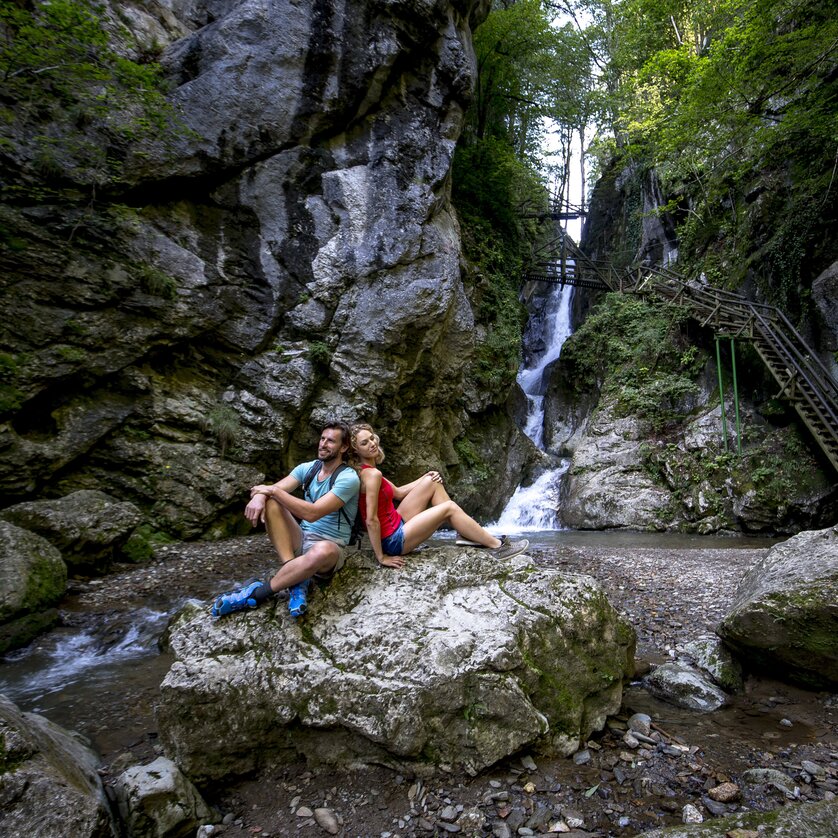- Family
- movement
- Sport and recreation
Kesselfallklamm Gorge
The beautiful Kesselfallklamm is like a little sister to the mighty Bärenschützklamm. Well secured steps allow you to explore this romantic gully comfortably with children too.
The countryside immediately around Graz is wild and romantic. Among the natural attractions hidden away here are narrow gorges and gullies, through which busy streams rush. The beautiful Kesselfallklamm is like a little sister to the mighty Bärenschützklamm. Well secured steps allow you to explore this romantic gully comfortably with children too. At its northern end is the town of Semriach, a health resort popular for its air quality and treasured as a wonderful patch of Styria.
The Kesselfall gorge, the most spectacular section of the Rötschbach stream, has been accessible since 1904. The Kesselfall circle trail (R3) starts at the Sandwirt restaurant in Augraben. A pictorial sign will show you the way: a man falling into a pot (Ger. "Kessel"). Fresh from the spring, the water rushes and roars over waterfalls, in rapids and through pools. From the highest of the falls, the water plunges in cascades over a 38m drop. Thanks to more than 50 ladders and bridges, in all, about 1,800 rungs, you can experience this marvel up close. On the upper reaches of the gorge, where the Rötschbach stream is silently murmuring, the circle trail turns to the right. Walking steeply uphill, you will first reach an unusual rock formation called "Stone Gate" and will pass a cave, before going downhill and finishing the tour in the valley at Sandwirt. In one and a half hours of walking you would have covered 2.7 km and an altitude difference of 200m.
Alternatively, you can stroll on to Semriach from the exit of the gorge. This picturesque market town nestles amongst the mountains of Schöckl, Tanneben and Hochlantsch and is famous for its good air quality. Various hiking trails start from there. A special attraction of Semriach is Lurgrotte, the biggest water-bearing dripstone cave in Austria. The charming houses facing the long market square are evidence of former prosperity brought to Semriach by silver mining up to the mid-16th century. The enchanting late Gothic parish church is dedicated to St. Aegidus as is the cathedral in Graz. Even in its architecture the church seems to be a small-scale copy of the Graz model. Two Roman tombstones at the southern wall of the church and a little collection of Roman stones on the ground floor of the steeple prove that even the ancient Romans appreciated the Semriach region.
The gorge is openened from March to November. Closed from December to February!





